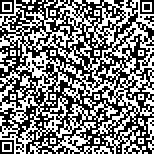| 摘要: |
| 本文采用控制表面氧化法制备超疏水表面(153.2°),并对自然对流条件下竖直放置的超疏水表面与裸铜表面进行可视化结霜实验。观察并对比实验初期有液核与无液核生成成霜时疏水性对结霜过程的影响,研究了疏水性对结霜的影响随冷表面温度(﹣50~-30 ℃)、空气相对湿度(30%~70%)的变化规律。结果表明,有液核成霜时,超疏水表面具有显著的抑霜效果;无液核成霜时,疏水表面不再具有抑霜效果,反而超疏水表面霜晶生长更为密实;疏水性对无液核成霜过程的影响随空气相对湿度的增大、冷表面温度的降低而减弱;从云物理学与核化理论角度分析了无液核生成时超疏水表面霜晶分布更密的原因,发现实验制备的超疏水表面上凹坑与CuO晶体颗粒为凝华核化提供了有利位置。 |
| 关键词: 疏水性 冷表面温度 结霜 实验 |
| DOI: |
| Received:May 31, 2018Revised:August 27, 2018 |
| 基金项目:北京市自然科学基金(3162007)项目资助。 |
|
| Effect of Hydrophobicity on Frost Deposition on Vertical Cold Surfaces under Natural Convection Conditions |
|
Zhao Lingqian, Liu Zhongliang, Li Liyan, Li Yanxia
|
| (Key Laboratory of Enhanced Heat Transfer and Energy Conservation, Ministry of Education, College of Environmental and Energy Engineering, Beijing University of Technology) |
| Abstract: |
| A series of visible frosting experiments on vertical superhydrophobic surfaces (153.2°) that were prepared by chemical etching and bare copper surfaces were conducted under natural convection conditions. The effect of hydrophobicity on the frosting process was investigated and compared under liquid nuclei and no-nuclei frost deposition mode. Furthermore, the effect of hydrophobicity on frost deposition was studied for cold surface temperatures (?50 to ?30 °C) and different air relative humidities (30%–70%). The experimental results showed that there was no liquid nucleation at the beginning of the experiment when the cold surface temperature was lower than ?30 °C at an ambient air temperature of 16 °C and a relative humidity between 30% and 70%. It was found that the frost crystals on the superhydrophobic surface were much denser compared than those on a copper surface under the no-nuclei frost deposition mode. This result was completely different from that of the liquid-nuclei frost deposition mode in which the frost formation on the superhydrophobic surface was suppressed significantly during the initial period of frost deposition. The frost crystal coverage of the cold surface was defined to characterize the density of the frost crystal distribution. It was revealed that as the relative humidity increased and the cold surface temperature decreased, the effects of hydrophobicity on frost deposition was mitigated, the frost crystal coverage difference between the superhydrophobic and plain copper surfaces was reduced, and the time during which the frost coverage difference lasted was shortened. The maximum frost coverage difference between the superhydrophobic and plain copper surfaces was greater than 15% and lasted for approximately 35 min in the case of cold surface temperatures ?30 °C, with the ambient air temperature at 16 °C and the relative humidity at 30%. The hydrophobicity had little effect on the frost deposition once the cold surface temperature was reduced to a sufficiently low temperature. The phenomena observed were also analyzed according to the theory of cloud physics and nucleation. It was found that the concave pits and the CuO crystal particles on the superhydrophobic surface provided advantageous sites for desublimation nucleation. |
| Key words: hydrophobicitiy cold surface temperature frost deposition experiment |


